Broadway musical with autistic cast has strong Westchester connections
NEW YORK − Stagehands swoop in to remove all signs of the afternoon rehearsal, stowing tables and cables and computer monitors. Gaffer tape is balled up and discarded.
The new musical "How to Dance in Ohio" was in previews at the Belasco Theater during a recent visit, which means performances by night and rehearsals by day, as the cast and creative team tweak, cut and shape the show for its opening Dec. 10. Changes made minutes ago — a restaging of a scene involving a brother taking his older brother's Chevy Silverado without permission — will go before an audience in less than three hours.
Sammi Cannold and Ashley Wool settle in for a conversation. The Westchester natives are a study in contrasts.
Wool speaks in whole paragraphs, a stream of energy and enthusiasm that radiates the Wig 'n' Whiskers Club theater kid she was at Lakeland High School in Shrub Oak, and the musical theater major she was at SUNY Geneseo. Cannold speaks in staccato bursts, her words chosen and changed, careful. She was a debater at Byram Hills High School in Armonk, got her bachelor's degree at Stanford, her master's at Harvard.
Deep dive from our archive: Our 2015 look at what some groups do to make shows welcoming, sometimes tailor-made, to those on the spectrum
That's where they've been. Where they are now is Broadway, making their debuts with "How to Dance in Ohio," a musical that is breaking ground in terms of accessibility on stage, backstage and on Broadway.
Based on Alexandra Shiva's Peabody Award-winning 2015 documentary, the musical tells the story of seven autistic young people who, as part of their social-skills group therapy, attend a spring formal dance. It has book and lyrics by Rebekah Greer Melocik, music by Jacob Yandura, and choreography by Mayte Natalio, all of whom are also making their Broadway debuts.
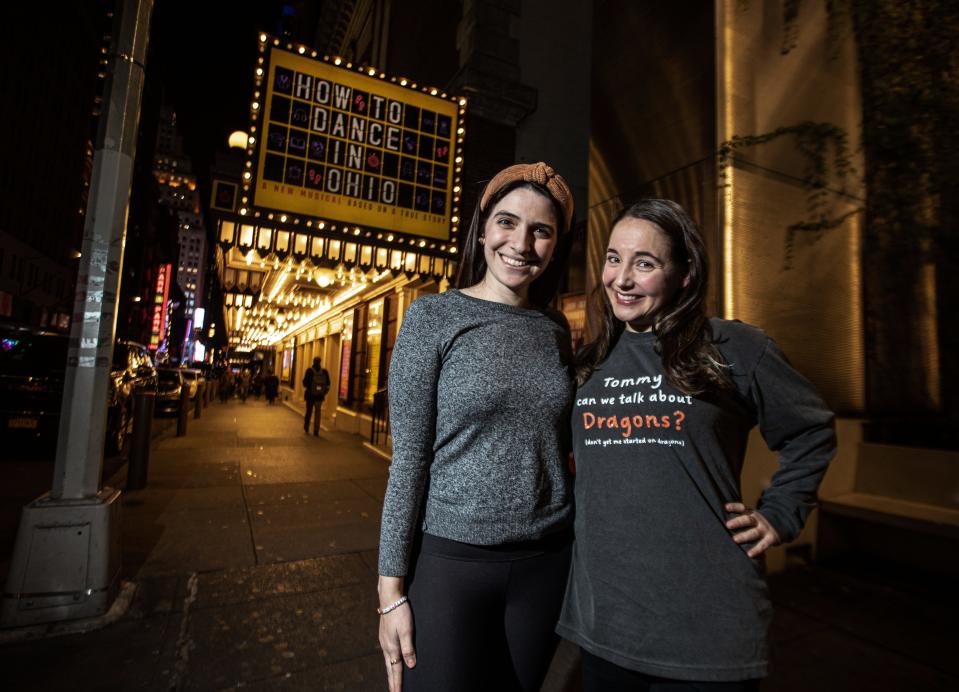
Sammi Cannold, a director seeking impact
Cannold laughs when it is suggested that there are easier ways to break onto Broadway than the path she and her creative team have chosen. Consider:
The project had another name attached to it at the outset: Broadway giant Hal Prince was developing the show at the time of his death in 2019, making for big shoes to fill.
To tell the story of seven autistic characters — with seven storylines, each needing its own arc — Cannold cast neurodiverse actors, all of whom are making their Broadway debuts. They are Desmond Edwards as Remy, Amelia Fei Yi-Hsuan Fei as Caroline, Madison Kopec as Marideth, Liam Pearce as Drew, Imani Russell as Mel, Conor Tague as Tommy, and Wool as Jessica.
Producers carved out Cool Down Spaces in the Belasco mezzanine and a lounge for patrons who need a sensory break during the two-act, two-hour, 25-minute musical, a decision that Cannold says was easy to make but took about 10 meetings to achieve.
The smallest details were seen to. The soap in the dressing rooms was replaced with unscented soap, in deference to those with scent sensitivity.
The intention and effort behind each of those decisions — including getting to know theater artists who process information in different ways, and meeting them where they are — is precisely the point, Cannold says.
"For me, there's no dreamier way to make my Broadway debut than this, because the reason I make art is to have impact," she says. "Eighty percent of what I've been so lucky to get to work on over the past 10 years has been advocacy-driven in some way. It feels like such a gift to like have a platform to tell the story that's going to move a needle or at least attempt to move the needle. And so that's what I really wanted to come to Broadway with: Something that was going to have a mission."
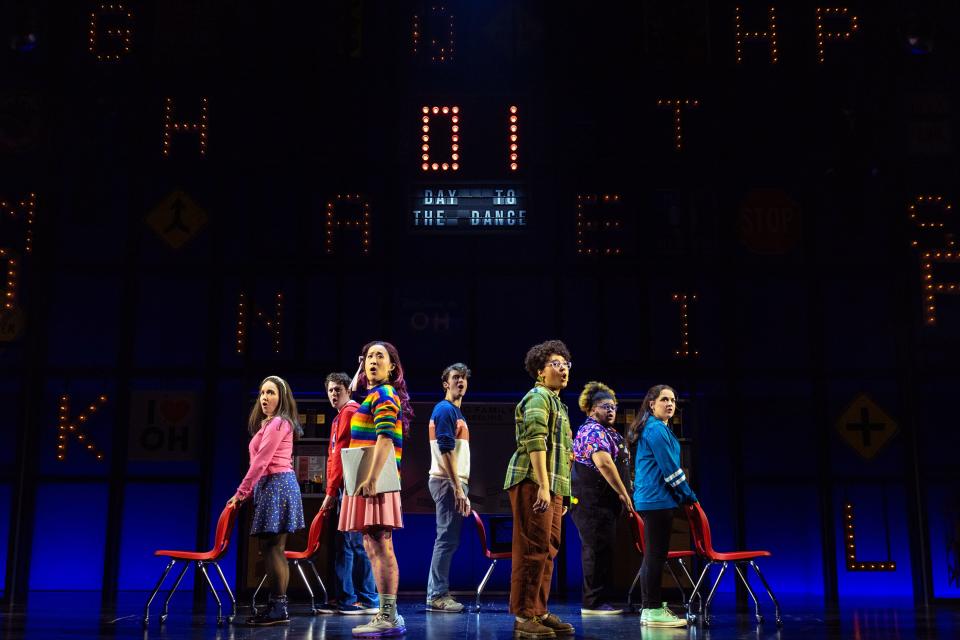
Cannold has made her mark in a hurry as a director over "the past 10 years" since she was a Stanford freshman. Her productions are critic's-pick events.
She directed "Evita" in Washington and at New York City Center, "Rent" and "Sunset Boulevard" at the Kennedy Center, "Carmen" at Lincoln Center, "Ragtime" on Ellis Island. As an undergrad at Stanford and again at Harvard, Cannold directed a production of "Violet" — about a girl on a bus trip — on a moving bus traveling among site-specific venues.
It's the kind of work that got her named one of Forbes Magazine's 30 Under 30 in Hollywood & Entertainment in 2019.
The arts are, in a way, the family business. Her father, Mitchell Cannold, was a producer of the film "Dirty Dancing," and mother, Dori Berinstein, is a Tony-winning producer and award-winning documentary filmmaker.
Cannold started directing earlier than most. She did youth theater in Westchester at the Armonk Library and at Random Farms Kids' Theater, but found a formative role in a summer camp production at Rippowam Cisqua School in Bedford at 13.
That's where director Keith Robellard saw her leadership and tapped her to direct "Joseph and the Amazing Technicolor Dreamcoat." The next summers saw Cannold stage "Annie" and "You're a Good Man Charlie Brown," all by the time she was 16.
"I think that really early experience in Westchester was really invaluable because so many people don't come to directing until way later because it's not something that you're often given a chance to try when you're a kid," she says. "So I'm really grateful for that."
Keeping a promise to herself
Ashley Wool was a mess, under a disco ball.
It was April 24, 2004, and Wool, a Lakeland junior, was ending a run of “Footloose,” a different musical about an important dance. She played Urleen, a boy-crazy friend of the female lead, Ariel.
And she was barely holding it together.
“All of us cried like multiple times before the show, during the show, after the show, while we were striking it," Wool says. "We had the 'Holding Out for a Hero' disco ball going away. There’s a picture of me hugging the disco ball.”
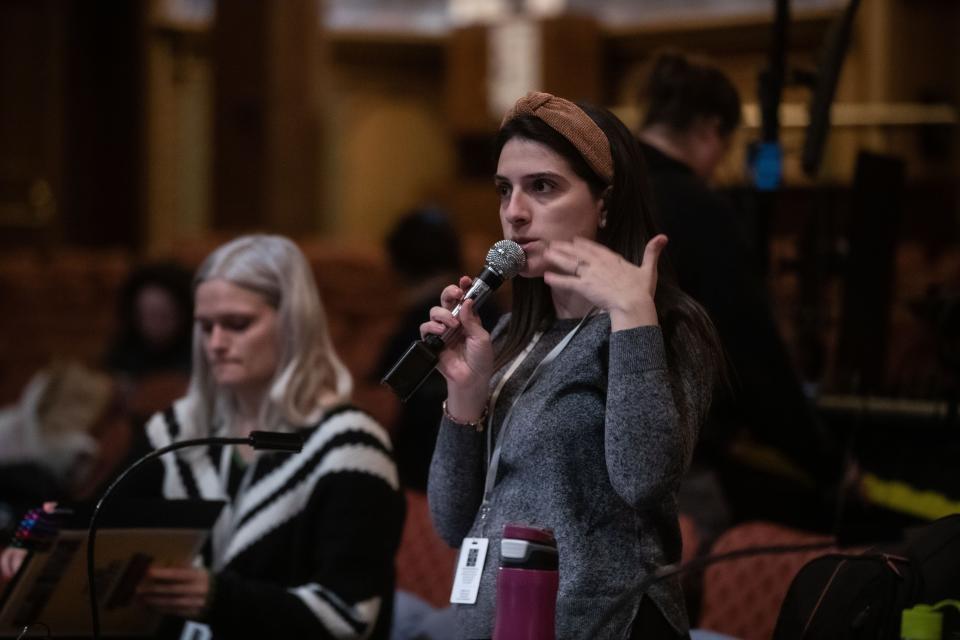
(That’s the disco ball that was spinning when Ariel and her friends fantasized and sang about their perfect man.)
There was something about that show, Wool says.
“It was just above and beyond what any of us had ever experienced in our lives up to that point, because of the relationships that we built and the shared passion and enthusiasm we had for what we were doing and the process of the artists that we were becoming,” she recalls.
Wool's love of theatrical collaboration also began early, she says, when she watched her father, Lou Wool — who is now superintendent of Harrison schools — writing and directing plays with his middle school students when he taught in Mount Vernon. The theater bug bit.
She has gone on to work in community and professional theater across Westchester, with Irvington's Clocktower Players and at the White Plains Performing Arts Center.
But “Footloose” was the show that left its mark on the young actor. She took a keepsake, a board from the trestle bridge on which Ren and Ariel sat in one scene, and nicknamed it "Tressie."
“I just remember taking it home and being like, ‘Yeah, this is the one tangible thing that I have from this show that I'm going to be a complete sentimental idiot about never throwing away,’” Wool says. “I promised myself, I said: ‘You know what? If I ever make it to Broadway, it's coming with me.’ And 20 years later, here she is.”
“Here” is Tressie's coveted spot in Wool's dressing room at the Belasco, a constant reminder of where she came from. "Here" is that date with Broadway, in another show about another dance.
Accessibility, inclusion, welcome, collaboration
"How to Dance in Ohio" opens with the cast making announcements from the stage — breaking the fourth wall before creating it — about the Cool Down Spaces, about the fact that while the musical is based on real events, it has been "embellished for dramatic effect" and differs from the documentary.
Then comes a line that wins knowing laughter and applause from an audience, some of whom are clearly versed in neurodiversity: "If you've met one autistic person, you've met one autistic person." And the kicker, "Now, you're meeting seven autistic people" which is met with thunderous applause.
Then it's on with the show and the opening song, "Today Is," which includes the lyric:
“Going places, I am going places.
There are places I need to be (I mean that literally)
But most of the spaces that I want to get to
Were not designed for me.”
Broadway was not designed for those with autism, in the audience, cast or creative team. It can be loud. It can involve blackouts and strobe effects. It's a sensory overload, full of the unexpected. The sound and lighting for "How to Dance in Ohio" is softer, gentler. And the culture, backstage and in rehearsal, is inclusive and welcoming.
It was designed that way.
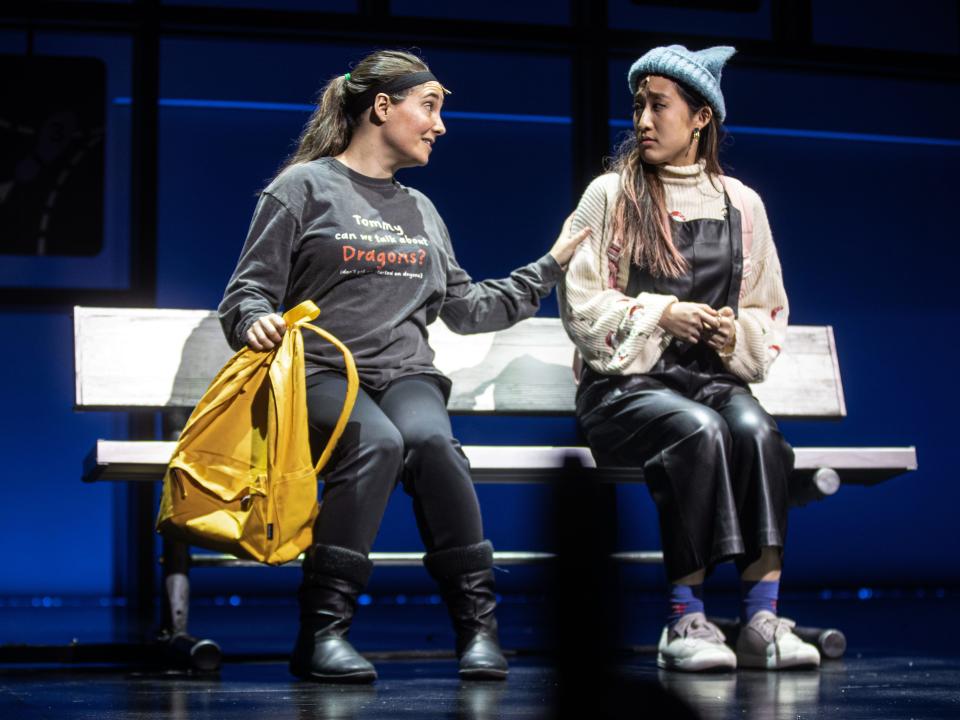
"Working on this show was actually more in my comfort zone than some others," Cannold says. "I prefer working with our company at many times to other companies that are not as neurodiverse. Many of our performers have said to me: 'I want really clear, really specific information when I get direction.' And that is the way I love to direct.
"When I work with companies who are not as neurodiverse, oftentimes when I give really clear, specific information, I'll get back. 'But what if I did this, instead?' Or 'I was thinking I would do this.' Which is all great. But I think I match better with people who want specific information."
Wool says she knew things would be different from the outset, two years ago, from the casting notice for the Syracuse Stage world premiere.
"The creative team and the producers have cultivated that environment from the top down, right from the casting notice that said, 'We are looking for autistic people to collaborate with.' That's a big difference from just slapping you on a stage, which would just be tokenism. They let us know that what we have to say does matter."
The "Core 7" actors have the training and the instinct, Wool says, and view theater as a tool. "Being autistic and being less comfortable with sudden change as opposed to a neurotypical person, theater is actually the thing that has taught us to figure out how to adapt."
Seven stories
The story of a spring formal dance for autistic young adults in Columbus, Ohio has as much laughter and panic and joy and triumph as a spring formal dance in Armonk or Shrub Oak or Mount Kisco. Which is kind of the point.
Wrapping seven stories into a musical doesn't make things easy, but it's a choice Cannold thinks is the right one, one that makes it more relatable to a wider spectrum of the audience.
"When I talk to people, they'll latch on to one character that really spoke to them. Like 'Marideth's dad is just like my dad.' I think that's the beauty of it because you can sort of pick what resonates with you. We've spent a lot of time trying to figure out the balance of who has material where, to make sure that if someone's really tracking Ashley's character, they don't go too long without seeing Ashley — which is a really hard way to make a musical."
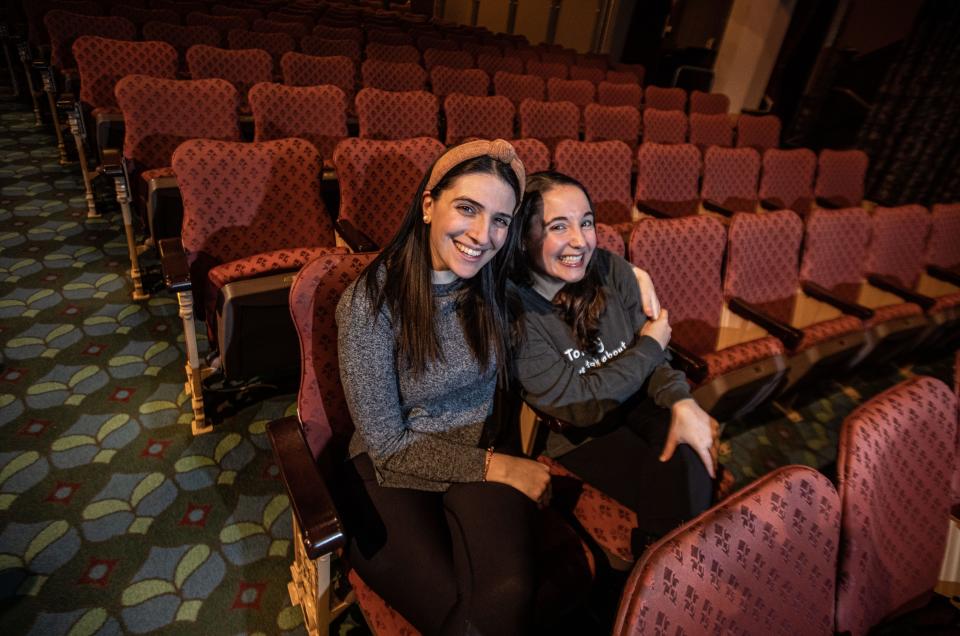
Autism doesn't manifest in one specific way, Cannold says, which made it important to show that these seven people are just seven examples.
Adds Ashley: "Like, here's as diverse a tip of the iceberg as we can fit into a two-hour show about what the autistic experience can look like."
Reach Peter D. Kramer at pkramer@gannett.com.
If you go
What: The Broadway premiere of "How to Dance in Ohio."
Where: Belasco Theatre, 111 W. 44th St.
When: 7 p.m., Tuesdays, Thursdays and Fridays; 2 and 7:30 p.m., Wednesdays and Saturdays; 3 p.m., Sundays. Holiday weeks may vary.
Tickets: $39-$179 via Telecharge.com.
Web: www.howtodanceinohiomusical.com for updated schedules.
This article originally appeared on Rockland/Westchester Journal News: 'How to Dance in Ohio' has autistic cast, strong ties to Westchester

